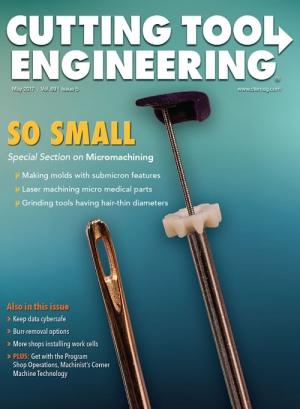Starting last month, Klas Forsström, president of AB Sandvik Coromant, also became president of Sandvik Machining Solutions, which is comprised of cutting tool brands Sandvik Coromant, Seco Tools, Dormer Pramet and Walter, as well as the company’s Powder and Blanks Technology division and new Additive Manufacturing product area.
He has been with the Sandvik group in various positions for about 25 years. He will continue as president of Sandvik Coromant, which celebrates its 75th anniversary this year, until a successor is found. In an interview conducted by CTE Editor Alan Richter at a global press event held at the company’s headquarters in Sandviken, Sweden, Forsström discussed his new role, the state of the cutting tool market, the importance of attracting talent to manufacturing, tool recycling and the role of R&D.
CTE: What are your expectations in heading an organization with competing tool manufacturers?

Klas Forsström is the new president of Sandvik Machining Solutions.
Forsström: I am the father of four kids. As in all families, it is good to have diversity. That is what I look forward to [in my new role at Sandvik], having a diverse family of brands. It is very often you care more for your first kid than your others, perhaps, but in the end, you love all your kids. That is really what will happen here.
CTE: How is the market for cutting tool sales?
Forsström: Sandvik Machining Solutions and Sandvik Coromant are on a pitch upwards. China is doing very well. Parts of Europe are stable but picking up. In North America, in particular the U.S., demand picked up at the end of last year. Oil and gas is leveling out and starting to pick up. Aerospace continues to do well in North America. If we are only talking about the end of last year, then I am very optimistic about the future.
CTE: What needs to occur to improve cutting tool sales for the entire industry?
Forsström: I’m a firm believer in productivity, which basically means more output with less input. The industry needs to embrace productivity even more—accepting new solutions, driving higher efficiency and, thereby, increasing
competitiveness.
CTE: As autonomous systems become more prevalent in manufacturing, what role will people have in the decision-making process?
Forsström: People will continue to have a strong influence in the manufacturing industry. At the press event, Camilla [Engbrink, vice president of product management and R&D at Sandvik Coromant] talked about the need to attract bright, talented people to the industry. We need to learn how to bring the brightest talent into manufacturing because the industry will be, for the foreseeable future, one of the most important on the globe. When I ask my four kids and their friends what type of job they would like to have, very few automatically say, “To work in the manufacturing industry.” But if, instead, I ask them, “What are your interests?” most of them say, “Innovation, working with people, working with design, working with computers.” Then I say, “You should fall in love with the manufacturing industry.”
CTE: What is the role of automation in cutting tool manufacturing?
Forsström: Automation takes away non-value-added jobs and provides opportunities for more value-added jobs. Tomorrow when you go to Gimo (where Sandvik Coromant manufactures inserts and tool bodies), you will see robots transporting tools and inserts all over the place. Then you will see people, but you will be a little bit surprised at how few people we have in our facilities.
CTE: What is the company’s goal for recycling cutting tools?
Forsström: We have a clear vision that we should recycle 100 percent of the tools. The way we measure it is, if we sell 100 kilograms and recycle 100 kilograms in weight independent of what brand it is, then we have achieved 100 percent. On average in the last few years, around 80 percent was recycled. We recycle for two main reasons. The first is a genuine care about scarce resources, i.e., sustainability for the greater purpose. The second is to secure supply.
CTE: How important is R&D?
Forsström: R&D is part of our DNA. Over the years, a company needs to provide innovation—the right products and the right services. Wayne Gretzky used to describe the difference between a good hockey player and a great hockey player. He said a great hockey player plays where the puck is going to be, not where the puck is. That is the reason we put so much energy into R&D and future outlooks. We want to shoot the puck into the future.
Contact Details
Related Glossary Terms
- lapping compound( powder)
lapping compound( powder)
Light, abrasive material used for finishing a surface.
- pitch
pitch
1. On a saw blade, the number of teeth per inch. 2. In threading, the number of threads per inch.



